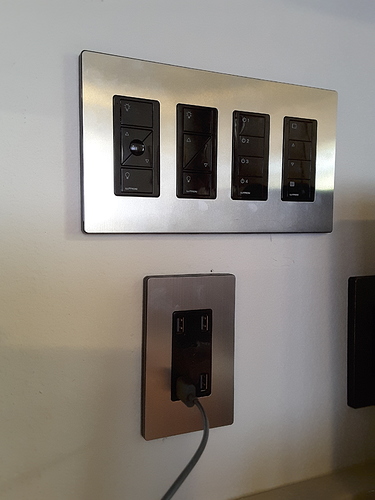Just got my Hubitat in the mail! Looking forward to plugging it in!
Apologies for yet another thread on smart switches, but due to a recent house move, my system is unworkable and the WAF is crashing. I need help for a quick solution, or at least tangible progress.
I need to add smart switches and replace existing dumb ones. For a bit more background, see here.
[edit: And see Post #40.... Hopefully, I give a vastly improved explanation for what I'm trying to do. But, come back for posts 2 to 39, cuz I got a lot of great answers including to questions I didn't ask!]
I'd like to get as many of the requirements below to match in both style and design. Even knowing which I can give up on matching would help.
edit: Below, what I mean by "controller remote" is to control the device rather than current, such as a smart bulb.. Telling the smart bulb to do something. By "switch" I mean controlling current rather than the device, such as dumb bulbs. So, where I say a "wired controller", it wouldn't be controlling the power, rather only being a powered device. "Non-wired" would mean battery operated, and obviously controlling a smart device. /edit
I need the following:
-
Wired dimmer
controllersremotes for smart bulbs, -
Non-wired dimmer
controllersremotes for smart bulbs, -
Wired
switchesremotes to work with a fan 4-speed control module (assuming that's a thing - and pointers on the control module would help, since a lot of this has to happen all at once), -
Non-wired
switchesremotes to work with a fan 4-speed control module (see above), -
Wired on/off switches (oddball things like bathroom vent fan and fireplace flue fan), and
-
Non-wired on/off switches (oddball things like swimming pool pump). edit: As per above, this is impossible. What I meant was non-wired on/off controllers. /edit
Does all that make sense, or am I going off-track yet again? Does any one company make all these? How close can I get?

 ) You'll need a very specialized device for that.
) You'll need a very specialized device for that. Mostly because that terminology has already been hijacked by .. Bulbs with a ZWave/Zigbee module inside it.
Mostly because that terminology has already been hijacked by .. Bulbs with a ZWave/Zigbee module inside it.



